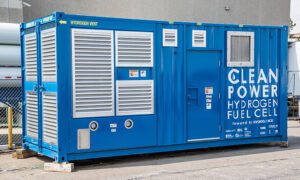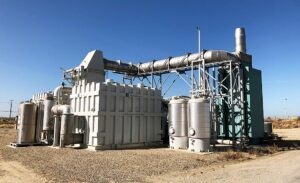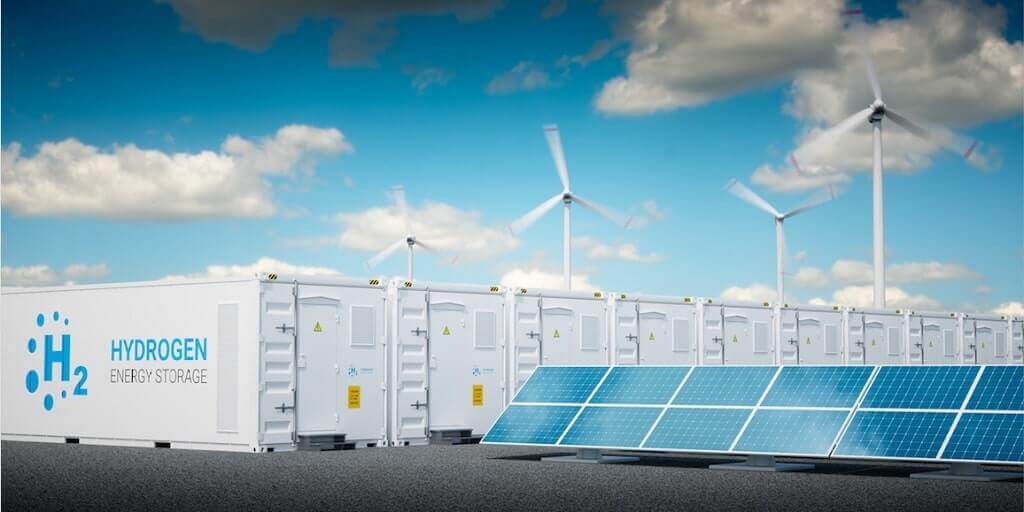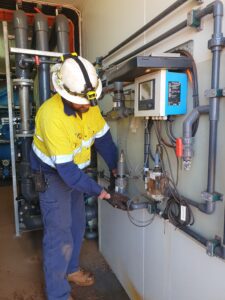Development & approval of a hydrogen fuel cell technical submission
In Western Australia, Hydrogen fuel cells are classified as Type B gas appliances and will require approval from Building and Energy if the gas for operation is supplied by a gas supplier.
This article is designed to assist all persons who are proposing or planning to develop a Hydrogen fuel cell project in Western Australia understand some of the requirements for a technical submission.

Containerised Hydrogen fuel cell prototype
Introduction
Developing a technical submission for the approval of a hydrogen fuel cell in Western Australia is a crucial step in ensuring the safe and compliant operation of such a facility. As Hydrogen is a highly flammable gas, it is vital to adhere to specific requirements to minimise risks to people, property, and the environment. In this article, we will outline some of the key considerations for preparing a technical submission.
Before diving into the requirements of technical submissions, it is important to highlight the role of a registered industrial gasfitter (I-class gas fitter). These professionals are licensed to perform significant gasfitting works on Type B gas appliances in Western Australia. Consulting an industrial gas fitter throughout the design, installation, and commissioning process is essential to ensure compliance and safety requirements are met.
The Gas Standards (Gasfitting and Consumer Gas Installations) Regulations 1999 also defines ‘registered gas fitter’ as:
Registered gas fitter, in relation to doing or supervising gasfitting work, means a person who is registered as the holder of a certificate of competency, a permit or and authorisation to do or supervise the work
Developing a technical submission
The technical submission for a hydrogen fuel cell will vary depending on factors such as design, complexity, location, and application. However, the following elements should be included as a minimum requirement:
1. Appliance Information
- Original Equipment Manufacturer (OEM) details
- Appliance type, model, serial number, output capacity, operation, and process description.
2. Contact Details
- Engaged gas fitter’s contact information (and commissioning person if different)
- Address and location of the proposed installation
- Contact details of the owner, operator, or proposed operator.
3. Risk Assessment
- Identification and elimination or reduction of all hazards to an acceptable level
- Functional safety according to applicable standards
- Failure mode, and a cause and effects analysis according to applicable standards.
4. Competent Appliance Designer
- Details of the appliance designer, including name, organisation, qualification, contact number, and email
- Engineering qualifications in process/chemical, mechanical, electrical, and instrumentation.
5. Installation, Operation, & Maintenance
- Instructions for installation, operation, and maintenance
- Appliance markings, nameplate details
- Process and instrumentation diagrams
- Nominal gas consumption rate.
6. Compliance Documentation
- Applicable fuel cell stack module approved standard
- Compliance documentation for hazardous area assessments, compliant with Australian or Australian/New Zealand Standards
- Compliance documentation for any Programmable Electrical System (PES) or Programmable Logic Controls (PLC).
7. Safety Considerations
- Details of enclosure, ventilation requirements, and provision methods
- Details of discharge vent line design and location requirements
- Details of leak detection provision, including manufacturer, model, serial number, design standard, approval/certification number, and description.
8. Applicable Standards
Hydrogen fuel cell and industrial gas appliances:
- AS62282.3.300:2021 | Fuel cell technologies: stationary fuel cell power systems
- IEC62282-4-101:2014 | Fuel cell power systems for propulsion (other than road vehicles and auxiliary power units) in electrically powered industrial trucks – Hydrogen fuel cells only
- IEC62282-5-100:2018 | Portable fuel cell power systems
- SA TR 15916:2021 | All Hydrogen appliances
- AS3814:2018 | Industrial and commercial gas-fired Type B appliances
- AS1375:2013 | Industrial Type B fuel fired gas appliances
- AS/NZS5263.1.11:2020 | Small gas engine driven appliances
- NFPA 2 | Hydrogen Technologies Code.
- EIGA Doc 211/17 | Hydrogen vent systems for customer applications.
- ASME B31.12 | Hydrogen piping and pipelines.
- SA TS 19883 | Safety of pressure swing adsorption systems for hydrogen separation and purification.
- AS 26142:2020 | Hydrogen detection apparatus – Stationary applications
- AS 16110 series | Hydrogen generators using fuel processing technologies.
- AS 4041-2006 | Pressure piping.
- ISO 15649 | Petroleum and gas industry piping.
- AS/NZS IEC 60079 series | Explosive atmospheres.
Safety requirements:
- AS/NZS 60079.0 | Equipment – general requirements.
- AS/NZS 60079.10.1 | Explosive atmospheres’, Part 10.1 ‘Classification of areas – explosive gas atmospheres.
- AS 61508 | Functional safety of electrical/ Electronic/programmable electronic safety related systems Parts 0 to 7.
- AS/IEC 61511 | Functional safety – safety instrumented systems for the process industry sector, Parts 1, 2 and 3.
By providing a comprehensive technical submission that addresses these requirements, you can demonstrate your commitment to safety and compliance. It is crucial to ensure that the electrical and gas systems design, construction, and components align with relevant electrical and gas industry product application standards.

Hydrogen fuel cell prototype
Conclusion
In conclusion, the development of a technical submission requires careful consideration of various factors and compliance with relevant standards. It is essential to engage a qualified and suitably experienced gasfitter early in the development process, so as to aide in the design and approval process.
Ask us a question on LinkedIn.



I’m truly enjoying the design and layout of your blog. It’s a very easy on the eyes which makes it much more enjoyable for
me to come here and visit more often.